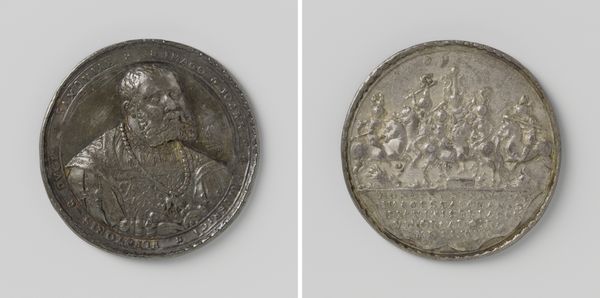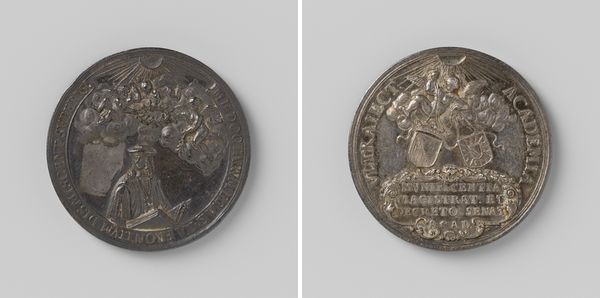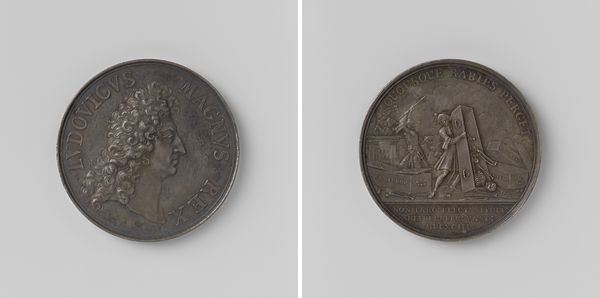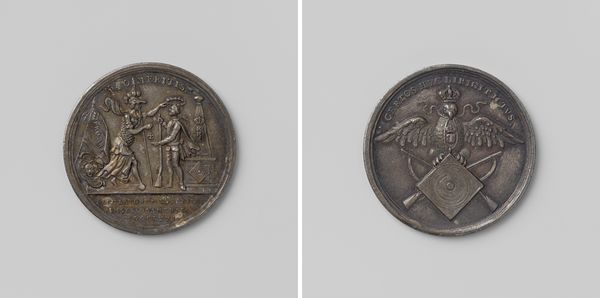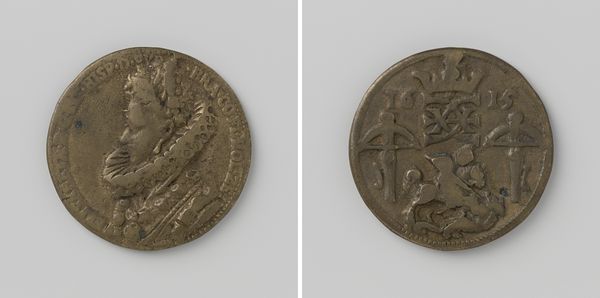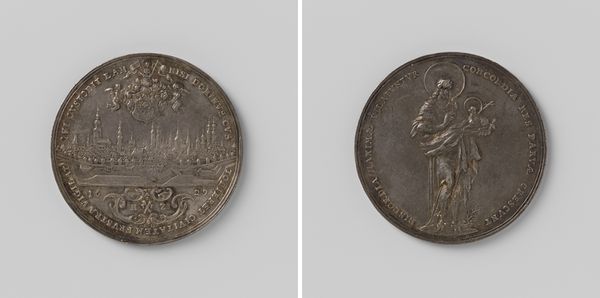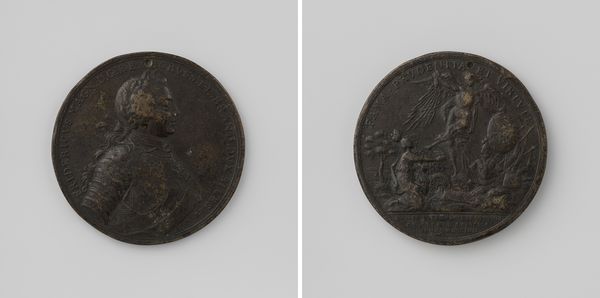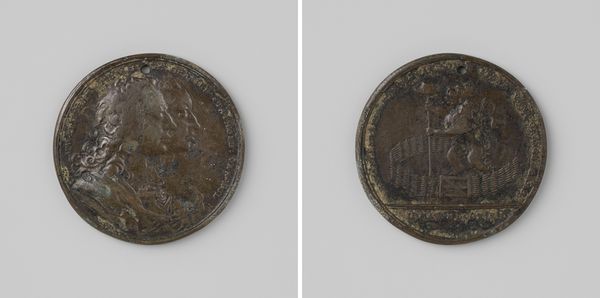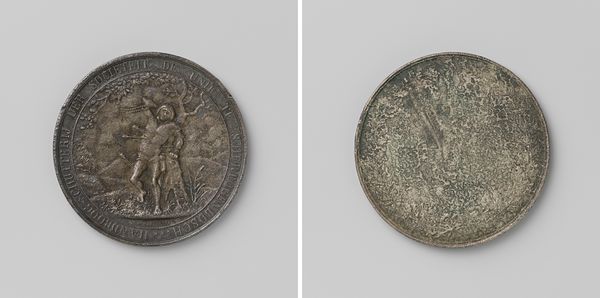
metal, sculpture
#
portrait
#
baroque
#
metal
#
sculpture
#
sculpture
Dimensions: diameter 5.5 cm, weight 57.16 gr
Copyright: Rijks Museum: Open Domain
Curator: Let’s have a look at this medal, titled “Leopold I, Duits keizer,” or Leopold I, German Emperor, made sometime between 1660 and 1705 by the monogrammist IB. It's rendered in metal, displaying baroque style elements common for the era. Editor: My first thought is that it feels deeply ceremonial, like a weighty piece designed to impress. A somber elegance about it too, wouldn't you say? The metallic sheen gives it a dignified presence. Curator: Absolutely. Consider the role of medals like these in early modern Europe. They weren't just pretty objects. This would have functioned as a tool for constructing and disseminating an image of imperial power, relying heavily on available metallurgical expertise. The precision of the die-striking is quite something, ensuring standardized reproductions were broadly accessible. Editor: Exactly. Imagine someone receiving this. A tangible assertion of power! But also, look at how it is so skillfully detailed. Do you get a feeling of stoicism mixed with almost…an artificial pose? Curator: Right. And notice the choice of materials too. Metal allowed for permanence, dissemination, and, of course, precious metal implied value. This one shows an image of Leopold and other elements, which are rooted in very deliberate decisions intended to communicate certain ideas. We see Leopold with accoutrements that suggest authority but how do they connect to the arboreal vision on the reverse? Editor: A vision which evokes the ordered formality of baroque gardens, no? Reminding us of the larger controlled world mirroring his rule. Yet…the artistry breathes some life, defying the metal's rigidness and echoing that strange sense of a theatrical spectacle about it all. Curator: It reminds us, I suppose, that every material object carries within it the imprint of labor. Editor: Yes, definitely something that resonates within this art and these materials. Curator: Examining the process of artistic production, we find that each material choice made speaks to its own political context of Leopold I's reign, influencing perceptions about imperial strength. Editor: I find that so striking—a collision of cold authority and, paradoxically, deeply engaging artistic rendering in this small metal world. Curator: Yes, this artwork demonstrates, for me, the potent intersection of material production and political aspiration in visual culture of the period. Editor: And for me, a slightly chilling echo from history rendered with captivating grace in what feels almost like a tangible, artistic whisper.
Comments
No comments
Be the first to comment and join the conversation on the ultimate creative platform.
